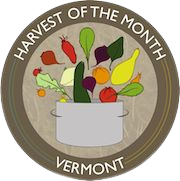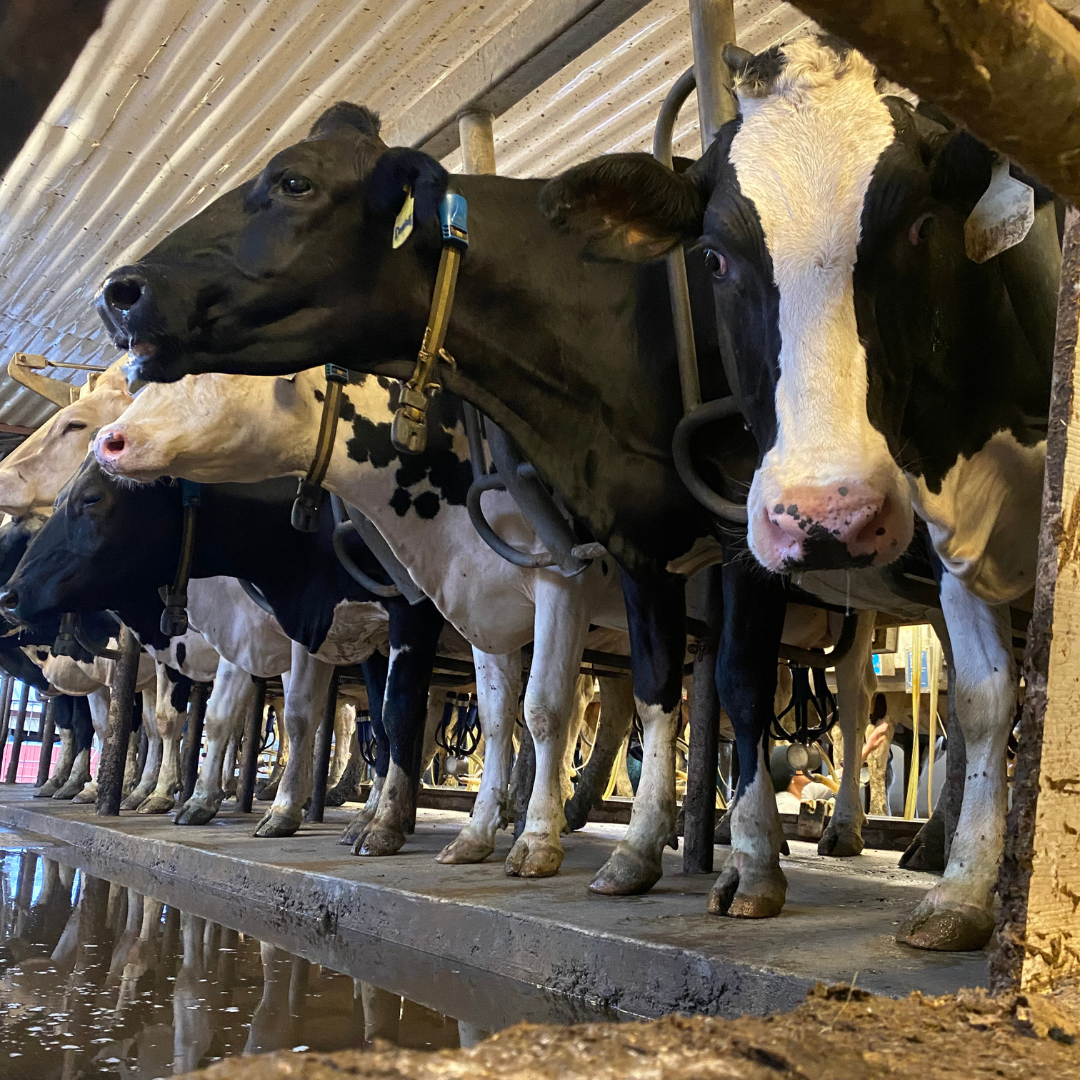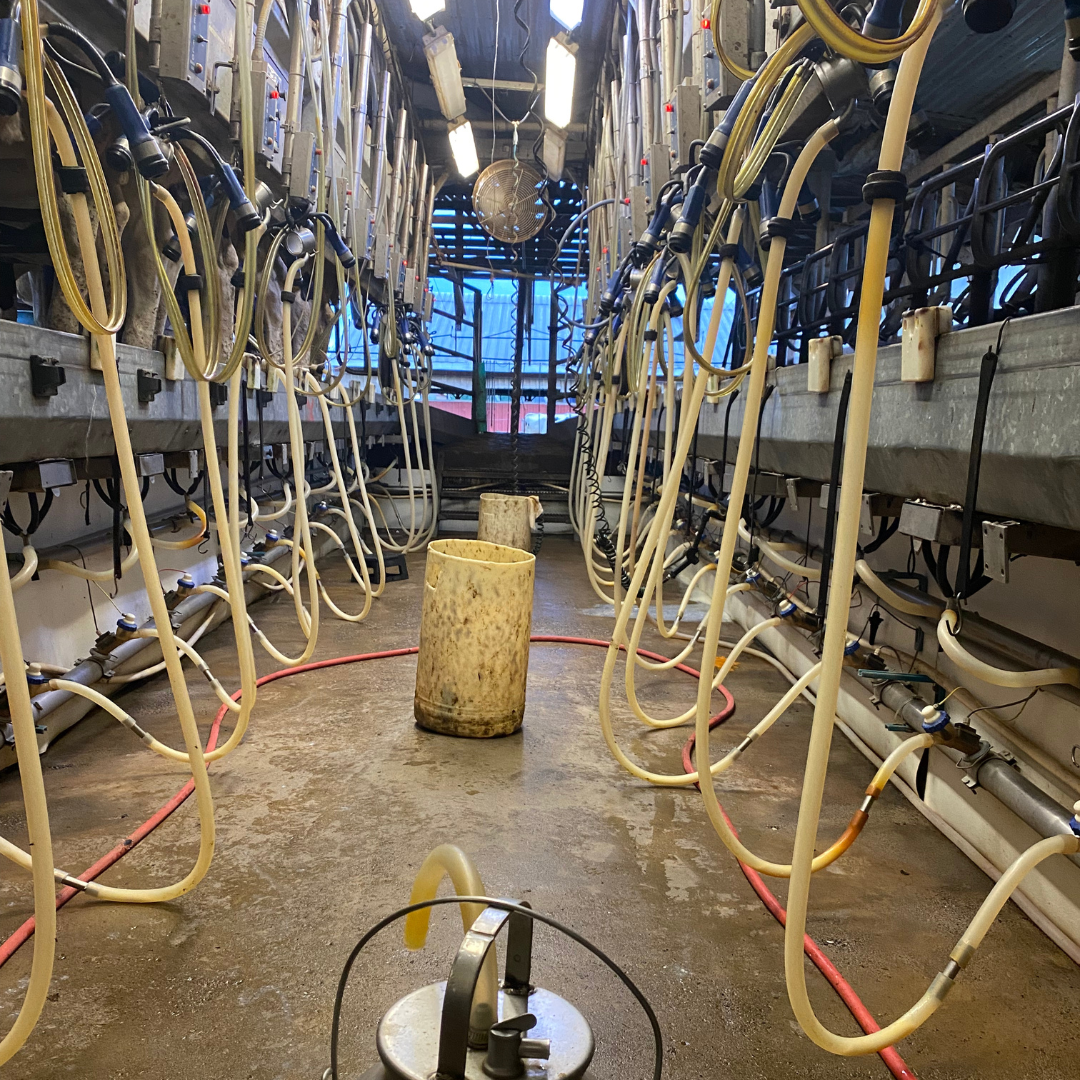Slideshow:
Dairy
LAND For the past 200 years, dairy has shaped Vermont’s agricultural landscape. While the number of dairy farms has been steadily declining since the 1950s, dairy is still Vermont’s largest agricultural product by volume, and dairy farms still utilize about 80% of the farmland in the state.
LABOR As of 2016, there are an estimated 1,000 - 1,200 Latinx migrant dairy workers, 90% of whom are likely undocumented. Read the Justice & Liberation story to learn more.
ANIMALS Vermont’s approximately 600 cow, sheep, and goat farms produce about 2.3 billion pounds of milk a year, 85% of which is exported to other states. Outside the US, people use milk from other animals including yaks, reindeers, horses, camels, donkeys, and buffalos.
PRODUCTS Vermont is home to many cheese, yogurt and butter producers. These are all milk-based foods, along with ice cream, sour cream, and whole, low-fat and flavored milks.
Around the world, people enjoy milk in different ways and from different animals. In Central Asia, Turkey, and the Middle East people drink a cold, fizzy, salty yogurt drink called Ayran or Doogh. In Kazakhstan, a popular traditional health drink is fermented horse’s milk. In South America, a popular dessert ingredient is called dulce de leche.
Many people can’t digest lactose (a sugar in milk). There are many alternatives, such as nut milks, or eating low-lactose foods like cheese and yogurt. These are both easier to digest for people with lactose intolerance.
Downloads (PDF):
Reading List:
» Cow by Jules Older (grades K-3)
» 14 Cows for America by Carmen Agra Deedy (grades 1-4)
» Milk from Cow to Carton by Aliki
» It’s Milking Time by Phyllis Alsdurf (grades K-3)
» Return to Sender by Julia Alvarez (grades 4-9), UNM Educator's Guide ,Random House Teacher’s Guide
Activities:
Recipes:
*To make this recipe dairy-free, substitute dairy products for a similar dairy-free alternative
Articles:
Justice & Liberation Story
When you eat ice cream, you are eating frozen milk! When you drink a glass of milk, where does it come from?
“Well look, milk comes from cows, but cows don’t milk themselves,” answers Victor Diaz*, a Vermont dairy farmworker and Milk with Dignity advocate. Victor is one of many workers who are part of the Ben & Jerry’s food chain. With the support of the farmworker organization Migrant Justice, Victor and other dairy workers like him became educated about their rights and collectively advocated for working standards such as a guaranteed fair wage, access to healthcare, and humane living conditions. In 2017, the global ice cream company Ben & Jerry’s became the first major corporation to sign onto the Milk with Dignity Code of Conduct, farmworker-led labor standards.
So next time you enjoy a scoop of ice cream, ask yourself, who milked my ice cream and how are they doing?
Learn more about the Milk with Dignity Campaign here.
*Migrant Justice. (2018, July 25). Milk with Dignity - Migrant Justice [Video], 11:54. YouTube. https://www.youtube.com/watch?v=HUxTQb4Q2kc
Harvest Photos
Harvest Videos
Sources:
https://www.vermontdairy.com/vt-dairy-today/
https://vermontdairy.com/wp-content/uploads/2015/12/VTD_MilkMatters-Brochure_OUT-pages.pdf
https://www.niddk.nih.gov/health-information/digestive-diseases/lactose-intolerance/definition-facts
https://www.farmprogress.com/dairy/global-demand-butter-cheese-rising
https://migrantjustice.net/about-the-milk-with-dignity-program
Mares T. Life on the Other Border: Farmworkers and Food Justice in Vermont. University of California Press; Oakland, CA, USA: 2019. [Google Scholar]






